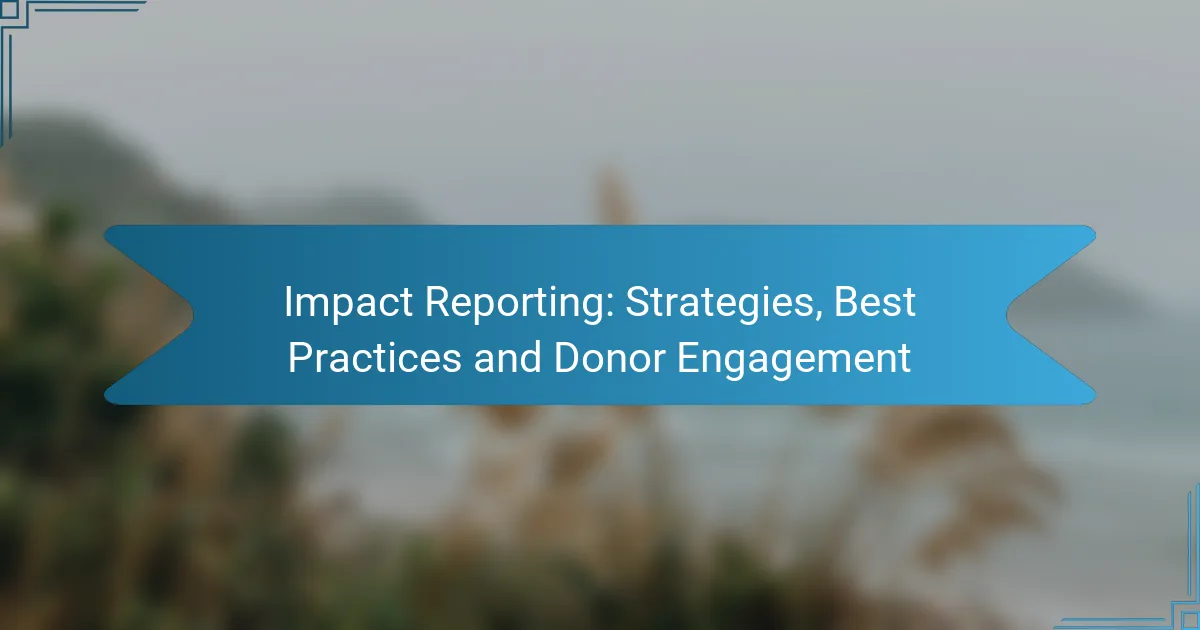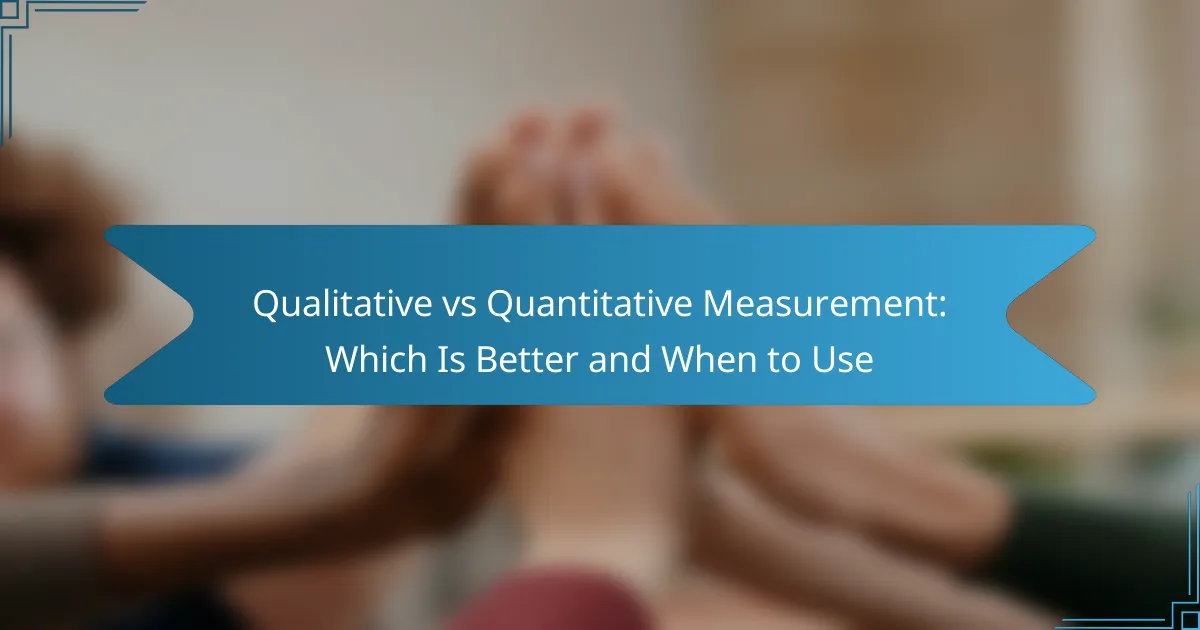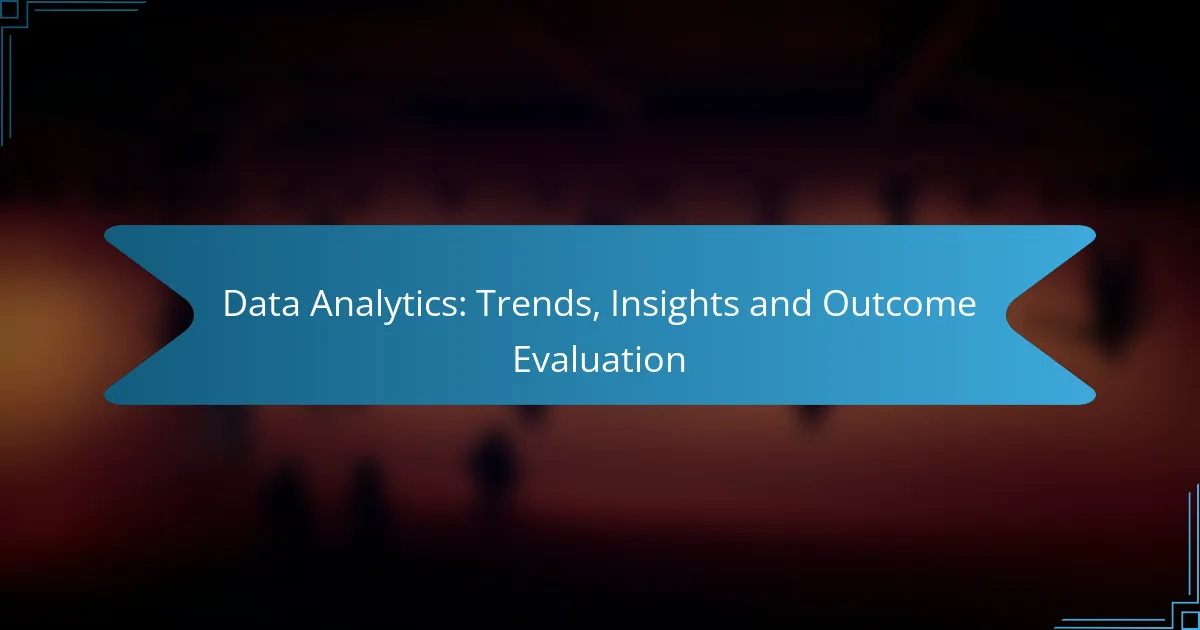Impact reporting is essential for effectively communicating the outcomes and benefits of projects to stakeholders, particularly donors. By combining quantitative data with compelling narratives and visual elements, organizations can engage donors and demonstrate the tangible effects of their contributions, fostering trust and encouraging ongoing support.
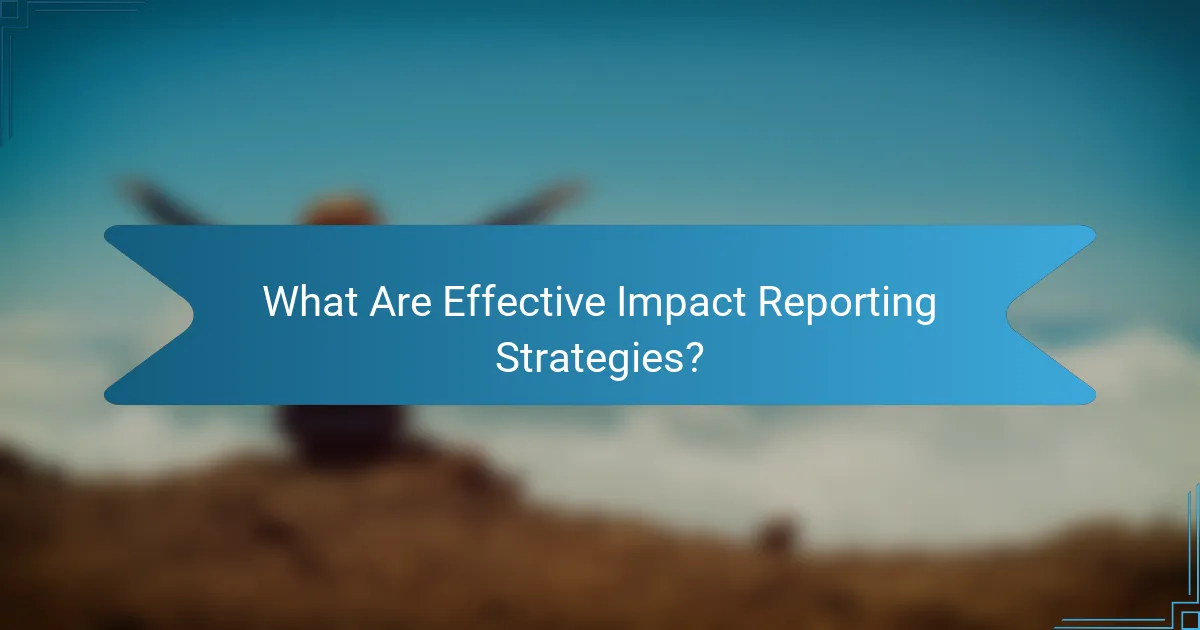
What Are Effective Impact Reporting Strategies?
Effective impact reporting strategies focus on clearly communicating the outcomes and benefits of a project or initiative to stakeholders. These strategies should combine quantitative data, compelling narratives, and visual elements to engage donors and demonstrate accountability.
Data-Driven Insights
Data-driven insights are essential for impact reporting as they provide concrete evidence of a project’s effectiveness. Collect relevant metrics, such as beneficiary numbers, financial performance, and program outcomes, to showcase the impact quantitatively.
Consider using benchmarks from similar organizations or industry standards to contextualize your data. This can help stakeholders understand the significance of your results and facilitate comparisons.
Storytelling Techniques
Storytelling techniques can make impact reports more relatable and engaging. Use real-life examples and testimonials from beneficiaries to illustrate how your work has made a difference in their lives.
Craft narratives that highlight challenges, successes, and lessons learned. This approach not only humanizes the data but also fosters emotional connections with donors, encouraging continued support.
Visual Communication
Visual communication enhances the effectiveness of impact reporting by making complex data more accessible. Use charts, graphs, and infographics to present key metrics and trends clearly.
Ensure that visuals are not only aesthetically pleasing but also informative. A well-designed infographic can convey a significant amount of information at a glance, making it easier for stakeholders to grasp the impact of your work.
Stakeholder Involvement
Involving stakeholders in the impact reporting process can enhance transparency and trust. Engage donors, beneficiaries, and community members in discussions about what metrics are most relevant to them.
Consider forming advisory groups or conducting surveys to gather input on reporting formats and content. This collaborative approach can lead to more meaningful reports that resonate with your audience.
Feedback Mechanisms
Implementing feedback mechanisms is crucial for continuous improvement in impact reporting. Create opportunities for stakeholders to provide input on your reports, whether through surveys, focus groups, or direct conversations.
Use this feedback to refine your reporting strategies and address any concerns. Regularly updating your approach based on stakeholder insights can enhance engagement and demonstrate your commitment to accountability.
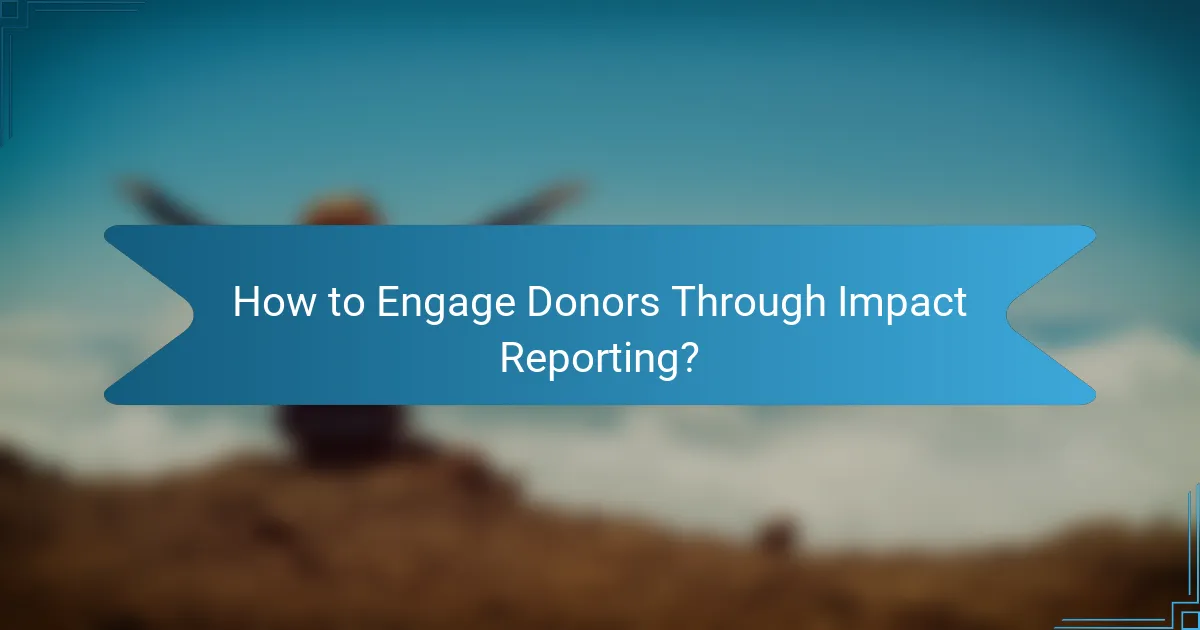
How to Engage Donors Through Impact Reporting?
Engaging donors through impact reporting involves providing clear, meaningful insights into how their contributions are making a difference. Effective communication strategies can foster trust and encourage ongoing support.
Personalized Updates
Personalized updates are crucial for making donors feel valued and connected to your organization. Tailor communications to reflect the specific interests and contributions of each donor, highlighting how their support has directly impacted your initiatives.
Consider segmenting your donor list based on giving levels or project interests. This allows you to send targeted updates that resonate more deeply, increasing donor engagement and retention.
Transparent Metrics
Transparent metrics provide donors with clear evidence of the effectiveness of their contributions. Use straightforward data to illustrate progress, such as the number of beneficiaries served or funds allocated to specific projects.
Present metrics in an accessible format, such as infographics or charts, to enhance understanding. Ensure that these metrics align with the goals outlined in your fundraising campaigns to reinforce accountability.
Showcasing Success Stories
Success stories are powerful tools for illustrating the impact of donor support. Share compelling narratives that highlight individual beneficiaries or project outcomes, emphasizing the positive changes brought about by donations.
Incorporate quotes and testimonials from beneficiaries to add authenticity. Visual elements, such as photos or videos, can further enhance these stories, making them more relatable and engaging for donors.
Interactive Reports
Interactive reports allow donors to engage with data in a dynamic way, making the information more memorable. Consider using digital platforms that enable donors to explore metrics and success stories through clickable elements or visualizations.
Ensure that these reports are user-friendly and accessible on various devices. Offering downloadable formats can also cater to different preferences, allowing donors to review the information at their convenience.
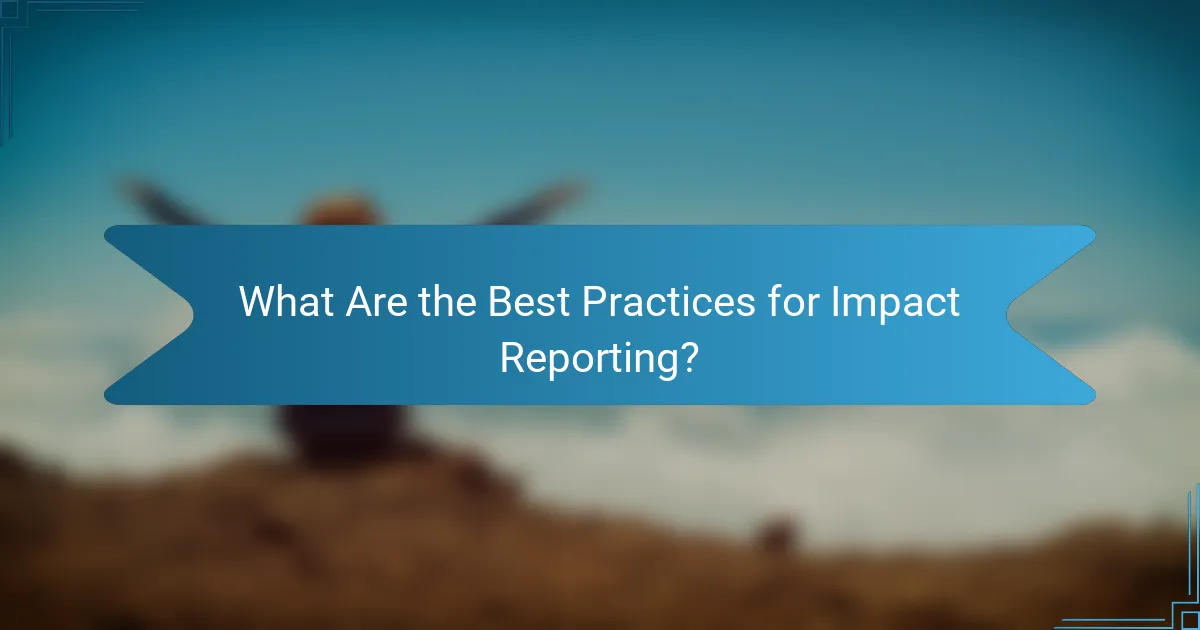
What Are the Best Practices for Impact Reporting?
Best practices for impact reporting focus on delivering clear, accurate, and actionable insights that resonate with stakeholders. These practices enhance transparency, foster trust, and ultimately strengthen donor engagement.
Consistency in Reporting
Consistency in impact reporting ensures that stakeholders can easily track progress over time. Use the same metrics and formats across reports to create a reliable narrative that stakeholders can follow.
Establish a reporting schedule, whether quarterly or annually, and stick to it. This regularity helps build expectations and trust among donors and partners.
Alignment with Mission
Impact reports should clearly reflect the organization’s mission and objectives. This alignment ensures that stakeholders understand how their contributions are making a difference in achieving the organization’s goals.
When drafting reports, highlight specific projects or initiatives that directly relate to your mission. This approach reinforces the connection between donor support and tangible outcomes.
Utilizing Technology
Leverage technology to streamline impact reporting processes. Tools like data visualization software can help present complex data in an easily digestible format, making reports more engaging.
Consider using cloud-based platforms for real-time data collection and reporting. This can enhance collaboration among team members and ensure that reports are up-to-date and accurate.
Regular Updates
Providing regular updates keeps stakeholders informed and engaged. Instead of waiting for formal reports, share progress through newsletters or social media to maintain interest and transparency.
Set up a system for collecting feedback from donors on the information they find most valuable. This can help tailor future reports to better meet their needs and preferences.

What Criteria Should Be Considered for Effective Reporting?
Effective reporting requires a clear understanding of the audience, the frequency of updates, and the accuracy of data presented. These criteria ensure that reports are relevant, timely, and trustworthy, which is essential for maintaining donor engagement and support.
Audience Needs
Understanding audience needs is crucial for effective reporting. Tailor your reports to address the specific interests and concerns of your donors, stakeholders, and beneficiaries. This may involve highlighting impact stories, financial transparency, or specific outcomes that resonate with each group.
Consider conducting surveys or interviews to gather feedback on what information your audience values most. This can guide the content and format of your reports, ensuring they are engaging and informative.
Reporting Frequency
Determining the right reporting frequency is essential for keeping stakeholders informed without overwhelming them. Common practices include quarterly or biannual reports, but this can vary based on the nature of the project and donor expectations.
Establish a schedule that balances the need for timely updates with the capacity to produce high-quality reports. Regular updates can enhance transparency and trust, while infrequent reporting may lead to disengagement.
Data Accuracy
Data accuracy is fundamental to effective reporting. Ensure that all information presented is reliable and verifiable, as inaccuracies can damage credibility and trust with donors. Implement robust data collection and verification processes to maintain high standards.
Consider using established metrics and benchmarks relevant to your sector to enhance the credibility of your reports. Regularly review and audit your data sources to ensure ongoing accuracy and compliance with any applicable regulations.

What Tools Can Enhance Impact Reporting?
Several tools can significantly improve impact reporting by streamlining data visualization and donor management. Utilizing the right software can help organizations present their outcomes clearly and engage donors effectively.
Tableau for Data Visualization
Tableau is a powerful tool for data visualization that allows organizations to create interactive and shareable dashboards. It transforms raw data into visually appealing graphics, making it easier to communicate impact to stakeholders.
When using Tableau, consider integrating data from various sources to provide a comprehensive view of your impact. This can include financial data, program outcomes, and demographic information. A well-structured dashboard can highlight key metrics and trends, enabling quick insights.
To maximize effectiveness, ensure that your visualizations are clear and focused on the most relevant data. Avoid cluttered graphics and prioritize simplicity to enhance understanding. Regularly update your dashboards to reflect the latest data and maintain donor engagement.
Salesforce for Donor Management
Salesforce is a leading platform for donor management that helps organizations track interactions, donations, and engagement levels. It provides a centralized database to manage donor relationships effectively, which is crucial for maintaining ongoing support.
Using Salesforce, organizations can segment donors based on various criteria, such as donation history or engagement level. This allows for targeted communication strategies that can enhance donor retention. Additionally, Salesforce offers reporting features that help visualize donor trends and campaign effectiveness.
To make the most of Salesforce, regularly update donor information and utilize automation features for follow-ups and thank-you messages. This not only saves time but also fosters a stronger connection with donors, encouraging continued support for your mission.
